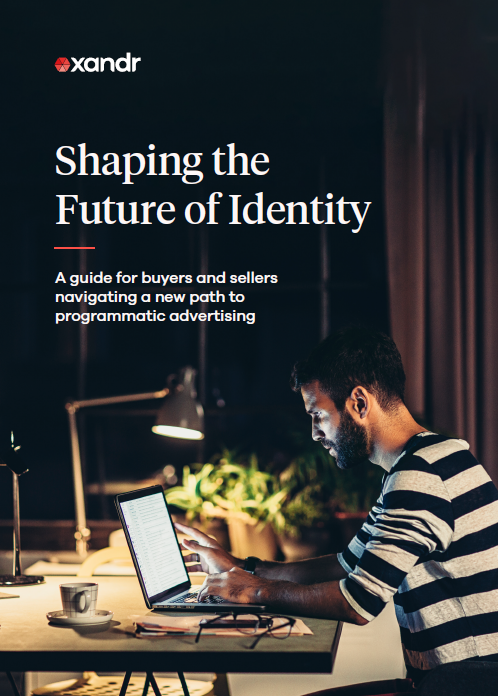Xandr Publishes Guide to the Future of Identity for the Ad Industry
Publishers, marketers need to get ready for the post-cookie world
Xandr, the advanced advertising company still owned by AT&T, released an industry guide looking at ways for ad buyers and sellers to address how to identify consumers in a future without third-party cookies.

Cookies have been used in digital media to identify individual consumers by their internet usage, but changes in privacy laws and browser practices are rendering them less and less useful.
Also Read: AT&T Holds Onto Xandr Amid WarnerMedia-Discovery Mega Merger
The guide, entitled Shaping the Future of Identity, is designed to help businesses evaluate alternative identity solutions.
“As consumers spend more time engaging with content, their data privacy must remain a priority for the advertising industry at large,” said Amanda Tan, senior director, product management, Xandr. “The rapidly changing identity landscape has led the advertising industry to reach an inflection point, and both publishers and marketers are central to writing the next chapter. A collaborative approach driven by a core belief in the need for an open internet will be essential for the success for both buyers and sellers in the new era of digital advertising.”
Identity is especially important at a time when more content is available to consumers in ad free environments. In order to get consumers to choose to see and react to ads, they have to be more targeted and engaging.
At the same time, marketers need to adjust buying strategies to ensure their programmatic advertising investments remain effective and efficient.
The smarter way to stay on top of broadcasting and cable industry. Sign up below
Also Read: Xandr Creates CTV Guide For Buyers and Sellers
Xandr’s guide explores a number of alternative approaches to identity, including publisher provided IDs, industry IDs, clean-room technologies, contextual targeting, modeled solutions, curated marketplaces and browser/app frameworks.
Among its conclusions, Xandr notes that marketers much evaluate their options.
“There are many considerations, and many more on the horizon, that span the spectrum of addressability from 1:1 addressable, where audiences can be matched across advertiser and publisher, to non-addressable, where no identity signals are available for matching audiences,” the guide said.
As for publishers, they must “rethink their monetization strategies, leveraging direct consumer relationships that enable premium content delivery that users are accustomed to. Buyers and sellers need to be ready to do some experimentation during this crucial transitional period.”
The good news, according to Xandr is that there is still time to prepare for this new era.
As for itself, Xandr said it has “a multi-faceted approach to identity solutions, to facilitate high-value transactions for buyers and sellers following the deprecation of third-party cookies and device IDs.
"We are laying the groundwork for agnostic interoperability for identifiers, so our clients can work flexibly with first-party data.”
Jon has been business editor of Broadcasting+Cable since 2010. He focuses on revenue-generating activities, including advertising and distribution, as well as executive intrigue and merger and acquisition activity. Just about any story is fair game, if a dollar sign can make its way into the article. Before B+C, Jon covered the industry for TVWeek, Cable World, Electronic Media, Advertising Age and The New York Post. A native New Yorker, Jon is hiding in plain sight in the suburbs of Chicago.

